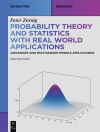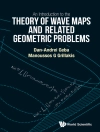In April 2007, the Deutsche Forschungsgemeinschaft (DFG) approved the Priority Program 1324 “Mathematical Methods for Extracting Quantifiable Information from Complex Systems.” This volume presents a comprehensive overview of the most important results obtained over the course of the program. Mathematical models of complex systems provide the foundation for further technological developments in science, engineering and computational finance. Motivated by the trend toward steadily increasing computer power, ever more realistic models have been developed in recent years. These models have also become increasingly complex, and their numerical treatment poses serious challenges. Recent developments in mathematics suggest that, in the long run, much more powerful numerical solution strategies could be derived if the interconnections between the different fields of research were systematically exploited at a conceptual level. Accordingly, a deeper understanding of the mathematical foundations as well as the development of new and efficient numerical algorithms were among the main goals of this Priority Program. The treatment of high-dimensional systems is clearly one of the most challenging tasks in applied mathematics today. Since the problem of high-dimensionality appears in many fields of application, the above-mentioned synergy and cross-fertilization effects were expected to make a great impact. To be truly successful, the following issues had to be kept in mind: theoretical research and practical applications had to be developed hand in hand; moreover, it has proven necessary to combine different fields of mathematics, such as numerical analysis and computational stochastics. To keep the whole program sufficiently focused, we concentrated on specific but related fields of application that share common characteristics and as such, they allowed us to use closely related approaches.
Innehållsförteckning
D. Belomestny, C. Bender, F. Dickmann, and N. Schweizer: Solving Stochastic Dynamic Programs by Convex Optimization and Simulation.- W. Dahmen, C. Huang, G. Kutyniok, W.- Q Lim, C. Schwab, and G. Welper: Efficient Resolution of Anisotropic Structures.- R. Ressel, P. Dülk, S. Dahlke, K. S. Kazimierski, and P. Maass: Regularity of the Parameter-to-state Map of a Parabolic Partial Differential Equation.- N. Chegini, S. Dahlke, U. Friedrich, and R. Stevenson: Piecewise Tensor Product Wavelet Bases by Extensions and Approximation Rates.- P. A. Cioica, S. Dahlke, N. Döhring, S. Kinzel, F. Lindner, T. Raasch, K. Ritter, and R. Schilling: Adaptive Wavelet Methods for SPDEs.- M. Altmayer, S. Dereich, S. Li, T. Müller-Gronbach, A. Neuenkirch, K. Ritter and L. Yaroslavtseva: Constructive Quantization and Multilevel Algorithms for Quadrature of Stochastic Differential Equations.- O. G. Ernst, B. Sprungk, and H.- J. Starkloff: Bayesian Inverse Problems and Kalman Filters.- J. Diehl, P. Friz, H. Mai, H. Oberhauser, S. Riedel, and W. Stannat: Robustness in Stochastic Filtering and Maximum Likelihood Estimation for SDEs.- J. Garcke and I. Klompmaker: Adaptive Sparse Grids in Reinforcement Learning.- J. Ballani, L. Grasedyck, and M. Kluge: A Review on Adaptive Low-Rank Approximation Techniques in the Hierarchical Tensor Format.- M. Griebel, J. Hamaekers, and F. Heber: A Bond Order Dissection ANOVA Approach for Efficient Electronic Structure Calculations.- W. Hackbusch and R. Schneider: Tensor Spaces and Hierarchical Tensor Representations.- L. Jost, S. Setzer, and M. Hein: Nonlinear Eigenproblems in Data Analysis – Balanced Graph Cuts and the Ratio DCA-Prox.- M. Guillemard, D. Heinen, A. Iske, S. Krause-Solberg, and G. Plonka: Adaptive Approximation Algorithms for Sparse Data Representation.- T. Jahnke and V. Sunkara: Error Bound for Hybrid Models of Two-scaled Stochastic Reaction Systems.- R. Kiesel, A. Rupp, and K. Urban: Valuation of Structured Financial Products by Adaptive Multi wavelet Methods in High Dimensions.- L Kämmerer, S. Kunis, I. Melzer, D. Potts, and T. Volkmer: Computational Methods for the Fourier Analysis of Sparse High-Dimensional Functions.- E. Herrholz, D. Lorenz, G. Teschke, and D. Trede: Sparsity and Compressed Sensing in Inverse Problems.- C. Lubich: Low-Rank Dynamics.- E. Novak and D. Rudolf: Computation of Expectations by Markov Chain Monte Carlo Methods.- H. Yserentant: Regularity, Complexity, and Approximability of Electronic Wave functions.- Index.












